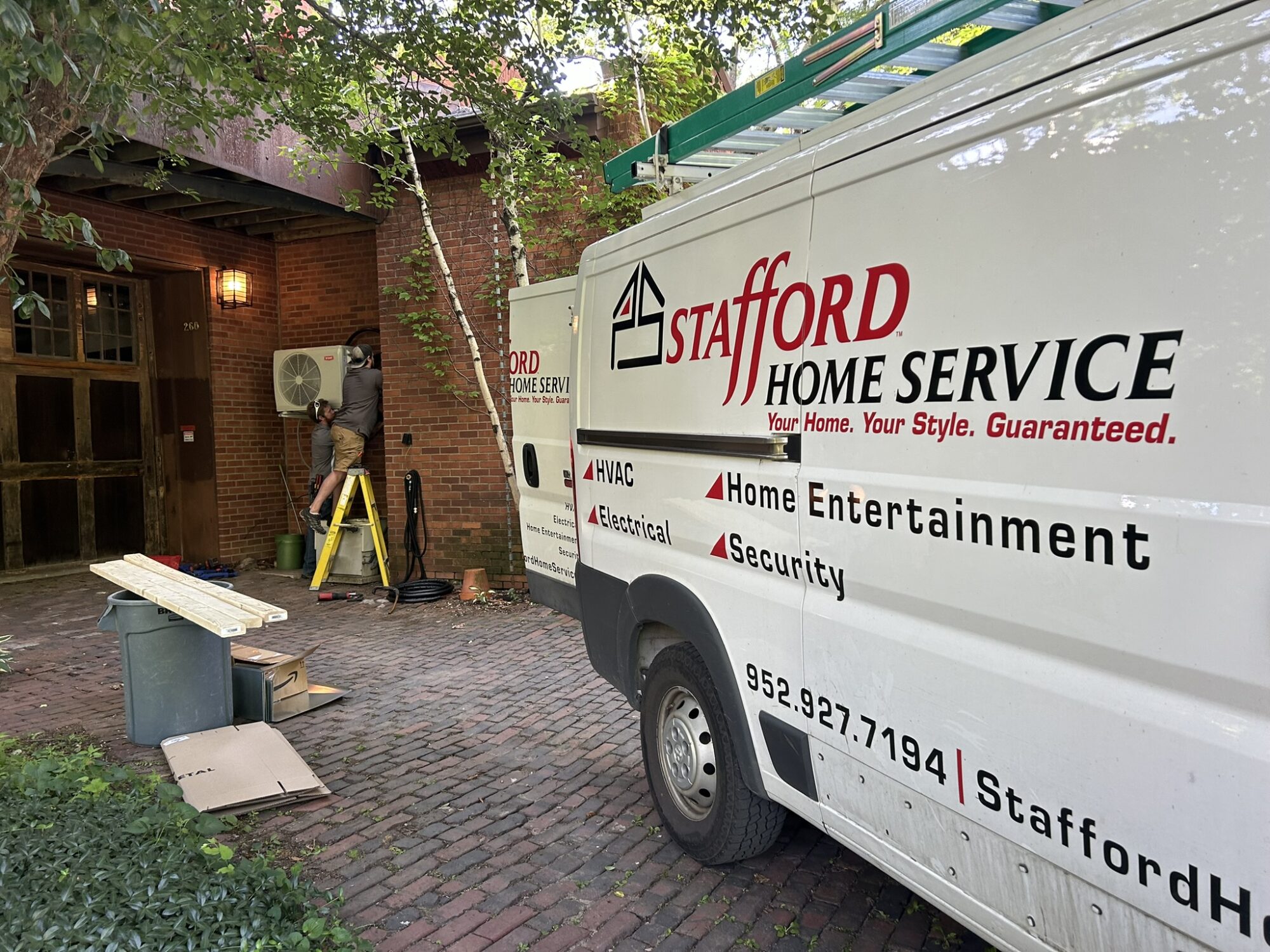
Historic buildings and air source heat pumps can be match made in heaven — and Tom Irvine’s condo in the rambling red brick James J. Hill Carriage House a block off Summit Avenue is proof.
At Fresh Energy, we’re using strategic and effective policy change to drive down emissions from the buildings sector — a top source of carbon pollution both globally and in Minnesota. These larger policy changes, that can come in the form of updated energy code, expanded energy efficiency programs, and beyond, have a ripple effect that helps guide and influence the clean energy choices Minnesotans can make.

Last year, Tom realized that his gas-fired furnace was reaching the end of its life and began exploring his options. As the Executive Director of the National Parks of Lake Superior Foundation (NPLSF), Tom had a leg up in his research. For the past two years, NPLSF has spearheaded a “Decarbonize the Parks” initiative in partnership with the National Park Service and Askov Finlayson to pursue net-zero greenhouse gas emissions in park facilities and operations on Lake Superior. While this work is multifaceted, some of it is focused on updating park buildings to be more energy efficient and utilize air source heat pump technology.
Armed with his “Decarbonize the Parks” knowledge, Tom turned his eye to his own home. When it was built in 1892, the James J. Hill Carriage House stored carriages, sleighs, and even a Pierce Arrow automobile, but today the building is home to three unique residences. Tom felt strongly that he wanted his home to reflect his passion for decarbonization and with the help of cold-climate heat pump expert Nick Bender, chose a system that would work for him.
From the beginning, Tom knew he wanted a heat pump and system with a regional connection and high level of distributor support, which led him to Bryant Heating and Cooling Systems distributed by Auer Steel. “When we were identifying the heating and cooling systems we wanted the historic buildings at Grand Portage National Monument and Apostle Islands National Lakeshore, we quickly zeroed in on Bryant,” he says. “Americans are proud of their national parks and they’re proud of U.S. businesses — what a great combo!”

When the heat pump installers from Stafford Home Service came earlier this summer to install Tom’s system, Nick was on hand to watch the project kick off. “I’m seeing more and more home and business owners opt to install heat pumps. People are gravitating to the versatility these types of systems provide as well as the state and federal tax incentives,” says Nick. “I’ve been designing air source and ground source heat pump systems for nearly 30 years and for me, figuring out the best way to retrofit older or unique homes, like the James J. Hill Carriage House, is a really fun process.”
“There are few applications that don’t fit a heat pump,” said Jeff Curtes, Vice President at Auer Steel and self-described sustainability champion. “Our historic buildings will be around for generations to come. Let’s find ways to ensure their systems perform better, provide energy savings, and reduce emissions all at the same time.”
So far, the new heat pump has been keeping Tom’s home cool on hot days, with the added bonus of dehumidification — a must for older buildings like his. But fall is in the air and not long from now Tom will be using his heat pump to warm his home on cool nights. “If you can heat and cool a century-old carriage house-turned-condo with a heat pump, I think you could do it anywhere,” says Tom. “I hope other people see this project and think, ‘Hey, I could do that, too!’”
Interested in learning more? Check out Fresh Energy’s explainer blog about heat pumps and how they intersect with Fresh Energy’s policy priorities and our greater energy transition. You can also get the scoop on exciting state and federal tax credits and rebates available through the Inflation Reduction Act (IRA) and state investments available to help you increase your energy efficiency, electrify your home, and beyond.
